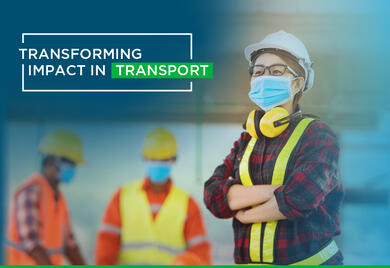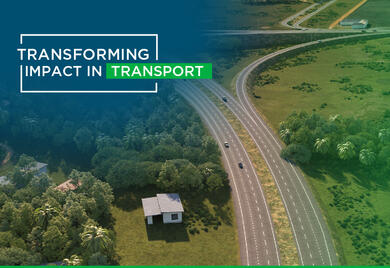Posts by Transport
What can Latin America and the Caribbean learn from Silicon Valley
In 1984, Steve Jobs launched the first Mac. The classic film “Revenge of the Nerds” was released the same year. At the time, computers and nerds went hand in hand. During my adolescence, the impression of what seemed to be happening in Silicon Valley was “not cool.” In recent decades, the area that stretches to the south of San Francisco has become the undisputed pole of innovation worldwide. Many countries have tried to develop their own versions of Silicon Valley, but for most of them this is an elusive goal. Silicon Valley is a unique ecosystem, thanks to the clustering of the top technology companies, universities closely linked to the subject, innovation laboratories, and a very extensive private equity industry. But what really makes this valley unique is its entrepreneurial culture. They take risks, learn from their failures, and always think big: growing 10 times and not by 10%. In his recent annual letter to Amazon’s shareholders, Jeff Bezos emphasizes the importance of having an obsessive customer focus. Bezos explains how machine learning and artificial intelligence impact almost all areas of his company. Above all, he highlights the enormous risk of becoming irrelevant if they get stuck on internal processes, if they don’t make quick decisions, and they don’t adapt to major trends. In summary, the letter is a manifesto to the Silicon Valley culture, an exponential vision of the future. The Silicon Valley recipe: New business models Last June, the directors of the Inter-American Development Bank (IDB) and the staff of IDB Invest (formerly known as Inter-American Investment Corporation) spent three days in Silicon Valley, for their first joint trip. The intense agenda included several of the most emblematic technology companies, incubators, accelerators, risk equity funds, and think tanks. Some of the most mentioned technologies were the Internet of Things, artificial intelligence, blockchain, robotics, 3D printing, virtual reality, and augmented reality. However, beyond its inventions, Silicon Valley is well-known for mainstreaming new business models. In many cases, these models have changed complete paradigms, such as the economy “uberization” and the crowdfunding. Ultimately, Silicon Valley is the window from which we glimpse the changes that will impact all areas of our lives, from our work, home, cities, and transportation to our finances, health, education, and entertainment. Computer processing costs continue to fall, so we should expect disruptive changes in every industry exposed to technology. This means nearly all industries! Silicon Valley's key for Latin America and the Caribbean Upon our return, we had many questions about Latin America and the role of development banking: What are the major development challenges emerging from these technological changes? How can we prepare to buffer the imminent impact that the most vulnerable will suffer? What kind of knowledge should we generate and how should we disseminate it? How can we ensure that regulations and laws (that by nature move more slowly than technology) favor innovation, efficiency, and inclusion? How can we deepen support for the Latin American entrepreneur? In the ICT (Information and Communications Technology) industry it is essential to support, in public and private spheres, investments in broadband in a region that has consistently under-invested in infrastructure. Mobile broadband is the great facilitator of the technology ecosystem and the great democratizer of the twenty-first century. Networks must be ubiquitous and costs need to be accessible. It is important to promote competition and entrepreneurship, and prevent market concentration. During 2017, IDB Invest has contributed to this goal/effort with loans to Telecom Personal in Argentina and to Tigo in Paraguay. Despite this, development banking must be more ambitious. In a world that is accelerating at great speed, banking must lead by looking forward and not in the rear-view mirror. The recipes from the past do not work when we are facing paradigm changes. The quantity of data circulating on the Internet doubles every year and a half. Currently, more content and information is generated per day than what was generated in entire centuries during the pre-digital age. Using landline phones, we took more than 100 years to connect all households. With cell phones, we connected nearly everyone in less than 20 years. And now, Dell, IDC, and others expect that by 2020 there will be between 30 billion and 50 billion objects connected to the Internet, helping in turn to provide feedback for machine learning and artificial intelligence. Much has changed since the release of “Revenge of the Nerds.” Now, in Silicon Valley, nerds are cool: they work in jeans and sandals, get around on skates and colored bicycles, they relax on beanbags, and are offered free meals, 24/7. In many cases, their bank accounts feature a lot of zeros, which is not surprising since the five companies with the greatest market capitalization in the world are Apple, Alphabet, Microsoft, Amazon, and Facebook. The nerds have in fact had their revenge! Subscribe to receive more content like this! [mc4wp_form]

How sustainable infrastructure can decide Peru’s future
Last March, Peru experienced extreme weather conditions in the north of the country. This resulted in numerous physical, economic and human losses with costs associated at over US$3 billion, or 0.5% of GDP. Planning for reconstruction, the country found itself at a crossroads: it could focus solely on meeting immediate construction needs or rebuild with a long-term vision. The latter option, to adapt the new infrastructure to the uncertainty of weather conditions, represents an opportunity to incorporate sustainability in highways, bridges, water distribution and management systems, as well as to leverage public-private partnerships and rebuild Peru’s economy to compete in the global market. The government of Pedro Pablo Kuczysnki has launched a reconstruction plan called “Reconstruction with Changes” which has two phases. The first seeks to invest up to US$3 million in immediate reconstruction and resettlement. The second, projected to last five years, focuses on the development of modern, climate-resilient public works that represent an additional investment of US$6 billion. A private sector opportunity A large part of infrastructure losses is absorbed by private markets, and for this reason the private sector has a lot to gain from reconstruction. For example, a new highway can allow products to reach their markets more quickly, lowering the cost of doing business for companies. The private sector not only benefits from reconstruction. It could also be part of its development. Estimates from the World Economic Forum suggest that for every dollar of public capital that is mobilized to close the infrastructure gap, five dollars of private capital should be mobilized. However, financing alone is not enough. Key tools for reconstruction IDB Invest (formerly known as Inter-American Investment Corporation), the IDB Group’s private sector arm, has experiences in technical assistance that can serve as a reference for Peru. In Mexico’s Port of Manzanillo, we found ways to adapt the design of the port to unpredictable weather conditions. This included ensuring reforestation and measuring the port’s carbon emissions. We made sure that the terminal operators have the tools and training necessary to replicate the environmental assessments every year. We also use the Envision methodology, developed by Harvard University’s Zofnass Program for Sustainable Infrastructure and the Sustainable Infrastructure Institute. The methodology focuses on quality of life, leadership, resource allocation, the natural world and climate, and risk. The tool has helped our clients measure sustainability, particularly during project planning and design phases. Environmental and social safeguards promote minimum quality in infrastructure investments. In June 2014, during the review of a loan to a local cement plant, our environmental models predicted atypical rains in Asunción, Paraguay. Our environmental specialists needed a contingency plan. When flooding occurred, the plant mitigated damage although there were some construction delays. The project’s sponsor recognized the importance of the environmental safeguard measures and invested in additional water studies, new internal routes with barriers and protected storage facilities. [clickToTweet tweet="For every dollar of public capital in #infrastructure, US$5 of private capital should be mobilized" quote="For every dollar of public capital that is mobilized in infrastructure, five dollars of private capital should be mobilized" theme="style1"] Corporate governance safeguards and attention to integrity also strengthen infrastructure sustainability. Although Latin America is a middle income region, two-thirds of its countries fall in the bottom half of Transparency International’s “corruption perception index.” According to this organization, 26% of Peru’s population has been the victim of corruption. IDB Invest maintains the highest standards of integrity, and we are confident that with our support for the RCC we will reduce this rate. Finally, investments in sustainable infrastructure can attract institutional investors. Investing in socially and environmentally responsible companies is increasingly considered a fiduciary responsibility and a means for increasing the value of company assets over the long term. We have witnessed the interest of such investors when we presented sustainable and bankable investments. The Reventazón hydroelectric dam in Costa Rica and the Campo Palomas and Colonia Arias wind farms in Uruguay have been pioneer projects in attracting financing from local institutional investors. In Peru, we seek to leverage local money and our capacity to advise public-private partnerships to attract more local stakeholders. This is a critical moment, but Peru is well positioned to convert its losses into opportunities. Investments in sustainable infrastructure are the only guarantee for building a more inclusive, less vulnerable, and more competitive future in the 21st century. Subscribe to receive more content like this! [mc4wp_form]

How can we boost sustainable infrastructure investments?
Evidence is mounting that through the right mix of policies and incentives the world can significantly reduce climate risks while boosting growth. Last month, the Organisation for Economic Co-operation and Development (OECD) said that action on climate change can generate inclusive economic growth over both the short and long term. These policies can increase GDP by up to 2.8% on average across the G20 countries in 2050. The question is, how can we capitalize on these opportunities while reducing climate risk? We believe that the answer is joining forces from governments, multilateral development banks and investors to increase investments in sustainable infrastructure.

Latin America needs more broadband to capitalize on the data explosion
There are many stories about the origins of chess. To me, the most colorful is about a king in India who was given a new game consisting of two armies and 64 squares, to overcome the loss of a son in the battlefield. The king was so delighted with this new game that he offered to give the inventor anything he wished for as compensation: “Give me one grain of rice for the first square, two grains for the second square, four grains for the third square, and so on for each of the squares of the game board,” said the inventor.

How to Implement Infrastructure Projects in the COVID-19 Era
IDB Invest's new guide for infrastructure projects has proven its usefulness in Colombia and can help decision-making during the pandemic. The guide helps to assess and prevent risks at a time when the region needs such projects more than ever.

Saving Infrastructure Projects Amidst the Pandemic
The development of transport infrastructure depends on the commitment of construction companies and financial institutions. Their collaboration is key for projects in Paraguay and Uruguay to move forward, and has major positive impacts on trade and employment.
